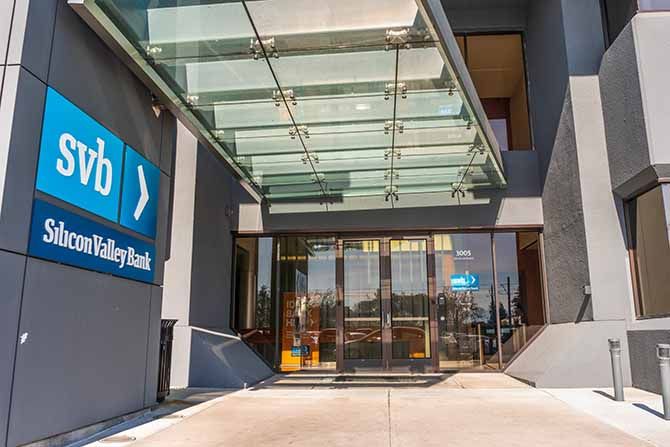The dust has largely cleared from the collapses of Silicon Valley Bank (SVB), Signature, and First Republic, but the policy implications still loom large. Stricter requirements for capital levels, stress testing, and resolution planning are in the works, and the FDIC has suggested some changes to the deposit insurance system. On the plus side for bankers, regulators could be softening their stance on M&A.
The changes from the prudential regulators are happening even as the CFPB finalized its small-business reporting rule and has a pending proposal to limit credit card late fees to $8.
To understand where things may go from here, I recently sat down with Lindsey Johnson, President and CEO of the Consumer Bankers Association, for an episode of Banking with Interest. In addition to lingering policy questions, we tackled the role of short sellers in the downfalls of SVB and First Republic, how social media is changing banking, and whether the recent turmoil is behind us.
What follows is our conversation, edited for length and clarity.
How did short-selling contribute to the bank failures and market volatility?
It definitely had an impact. There was a lot of misinformation leading up to the failure of SVB. By the time First Republic collapsed, a lot of the misinformation out there was purposeful. It was seeding distrust, and the folks creating it were profiting from it.
How do you combat that? How should policymakers deal with it?
We understand the role of short sellers in a free market. However, there’s a fundamental difference between making investments based on a company’s financial standing, strength, and trajectory and profiting on misinformation and distrust that you’re seeding. Some short sellers raked in over $1 billion the first couple of days in May.
We were the first to urge the SEC to look at the market manipulation that was occurring, and they did. That alone calmed things down. But even within the last couple of weeks, there were over $2 billion in short-sale positions on regional banks. We’ve continued to urge policymakers to keep an eye on it.
What kind of role did social media play?
Social media contributed to SVB’s failure (as did depositor concentration and group thinking among those depositors, the vast majority of which were uninsured). Banks have been overconcentrated in boom-and-bust sectors before — for instance, in the 1980s, Continental Bank was overconcentrated in oil. But it still took 10 days for Continental to lose 30% of its deposits. When Washington Mutual failed, it lost more than 4% of its deposits over 16 days, and when Wachovia failed, it lost 10% of its deposits over 19 days.
At SVB, the bank lost 25% of its deposits — over $42 billion worth — in a matter of hours. That’s astounding. And the St. Louis Fed reported that the FDIC knew SVB was going to lose another $100 billion the following day. The speed at which money can be transferred and communication happens today is incredible. All our banks are discussing the impact of social media, both on their deposit bases and on the narrative they communicate to the public.
What about policy ramifications? Will the Fed come out with stronger capital requirements? If so, how will the industry respond?
We’ve been encouraging policymakers and industry players to try to resist defaulting to personal priorities. [Fed Vice Chair for Banking Supervision] Michael Barr has been pushing higher capital requirements since his nomination. Progressive policymakers have been pushing back on S.2155 [the Economic Growth, Regulatory Relief, and Consumer Protection Act] since before it was finalized. It’s important to remember that SVB and Signature were well-capitalized banks with good liquidity. Policy-wise, I’m not sure anything could have been done to prevent their failures.
Will regulators ease up on M&A?
Hopefully. We have the most dynamic and competitive marketplace in the world, with 5,000-plus banks, fintechs, and nonbanks serving communities and customers. But when we shut M&A conversations down, we force things to occur that shouldn’t occur, and we force banks that should merge to not merge. They shouldn’t have to wait 12 to 15 months for approvals. There’s a ton of capital sitting on the sidelines, and banks are missing out on opportunities.
Lately, CFPB Director Rohit Chopra seems more willing to engage with the industry. Do you feel like he’s listening to you?
I was thrilled to see Director Chopra at our annual conference, CBA Live. We had a very substantive dialogue about not only the bank failures but also some of the forthcoming rules, such as 1071 and CRA. It was a very positive sign, and we want to continue the discussion and be able to share information. I don’t necessarily think we will change his agenda, but we can still have an impact in certain areas.
The CFPB has proposed a safe harbor for credit card late-payment fees at $8. What are the consequences to banks and consumers if this is the final rule?
We’d gone through a rigorous exercise with policymakers to set the fees where they are today. Then the CFPB came out with its proposal, and President Biden said during the State of the Union — before the ink had even dried — that the fees would be lowered to $8, presupposing this rule. Which makes it extremely difficult to have a productive discussion about what the fees should be.
If this is the final rule, the implications for banks and consumers would be huge. The administration seems to be telling consumers that they don’t need to pay their credit card bills, basically. But that will affect consumers in other ways. Their credit scores could drop; they may even lose access to credit. About 74% of borrowers, even those who pay their credit card bills on time, will see their costs increase.
We also don’t think the CFPB did the cost-benefit analysis to justify how they got to $8 or took into account the full costs to a bank of managing late fees. There’s a litany of post-charge-off costs, pre-charge-off costs, and other costs that they didn’t consider.
What will be the impact of 1071, the CFPB’s rule on small-business data collection?
Our banks support the intent of 1071. We’ve had significant concerns about some of its elements, and we actually did achieve certain things that are reflected in the final rule, but one of the things we didn’t achieve was a phase-in approach for 1071. We just need more time to implement it. The largest banks in the country don’t have the systems in place to collect and report this data from small businesses. If it’s going to be difficult for them, I can’t imagine the challenge facing smaller institutions.
To listen to the full conversation, visit https://bankingwithinterest.libsyn.com/cbas-johnson-on-ma-credit-card-late-fees-and-cfpbs-future.









